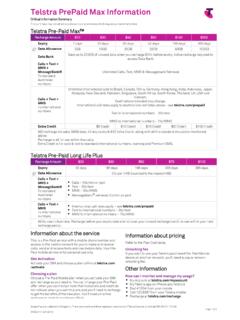Transcription of BUSINESS PLAN – OYSTER MUSHROOM CULTIVATION
1 BUSINESS plan OYSTER MUSHROOM CULTIVATION 1 of 8 BUSINESS plan OYSTER MUSHROOM CULTIVATION INTRODUCTION MUSHROOM is a nutritious vegetarian delicacy and has many varieties. Most of them are edible. It contains many vitamins and minerals but very low on sugar and fat. It can be grown in a temperature between 20 and 30 C and required relative humidity is 55 to 75%. Hence, North-East region has very good prospects of CULTIVATION as well as processing. Fresh mushrooms can be sold in the market. There is also growing market for processed - dried and packed - mushrooms as their shelf life is longer.
2 There are two main varieties of MUSHROOM viz. button type and OYSTER . OYSTER mushrooms are easy to cultivate and process and do not require huge investment. Hence, this note deals with CULTIVATION and processing of OYSTER mushrooms . PRODUCT o Applications MUSHROOM is an exotic and nutritious source of vegetarian food. It is a major horticulture product all over the world and is also becoming popular in India. Fresh mushrooms have very limited shelf life but dried and packed mushrooms have considerable shelf life.
3 This project can be commenced any where in the country and this note considers Assam as the prospective location. o Availability of Technology & Compliance The Agri-Horticultural Society of India, Kolkata, has successfully developed the technical know-how. Compliance under the PFA Act is mandatory. MARKET POTENTIAL MUSHROOM is a vegetarian delicacy and a suitable substitute for meat and eggs. It is easily digestible as well. It is very popular in most of the developed countries and being accepted in many developing countries like India.
4 Market for mushrooms is growing rapidly because of their nice aroma, subtle flavor, nutritious values and special taste. Many exotic preparations are made from them like soup, pickles, vegetables etc. It is also used for stuffing several food preparations and for garnishing. But its consumption is still confined to urban and semi-urban population. mushrooms have very short life after harvesting and hence they are sold in fresh form. Their shelf life can be enhanced by processing them.
5 BUSINESS plan OYSTER MUSHROOM CULTIVATION 2 of 8 Processed mushrooms are packed in special quality polythene bags or canned. This variety can be sold to far off places. Consumption of mushrooms is increasing in the North-East region and Guwahati, Shillong, Kohima etc. are potential markets. MANUFACTURING PROCESS o Process of CULTIVATION For successful CULTIVATION , careful attention has to be paid to three aspects viz. good compost, reliable spawn and right temperature during growing period or else partial or complete failure of the crop may result.
6 Natural compost is prepared from horse dung and wheat or barley straw. Some chicken manure and 3 kgs. urea per ton of compost may be added. Compost preparation is very crucial and advice from an expert may be taken. mushrooms are grown in wooden trays or boxes of 100 cm x 50 cm x 15 cm. They are filled well with the compost and pressed firmly leaving 3 cm clear space on top of the tray. The grain spawn is scattered on the surface of the compost which is then covered with a thin layer of compost.
7 After that the trays are covered with old newspaper sheets and water is sprayed to provide humidity. The trays are then stacked vertically. At a temperature of around 24 - 25 oC white cottony mycelium spreads and permeate through the compost. It takes around 12 to 15 days for the complete spawn running. Ultimately, the surface of the compost is covered with half to one inch level of casing soil. It is sterilized to kill insects, nematodes and molds. The casing soil is spread over plastic sheets and treated with formalin and stirred frequently for a week to remove formation fumes.
8 After casing, the temperature has to be maintained at 24-25 oC for 3 days after which it must be lowered to 18 oC. Thus, batches of trays must be arranged in such a way that there is a regular daily production. The process flow chart is as follows: Spraying of Water and Stacking of TraysScattering of grain spawn and covering of TraysFilling of Wooden Trays with Compost & PressingPreparation of Natural Compost BUSINESS plan OYSTER MUSHROOM CULTIVATION 3 of 8 o MUSHROOM Processing Fresh mushrooms have very limited life and hence processing is recommended to enhance their shelf-life.
9 Initially, fresh mushrooms are washed in cold water and then blanched in boiling water for about 3-4 minutes. Then they are dehydrated in a drier and packed. It is advisable to pre-treat fresh mushrooms in a solution containing brine to prevent discoloration. Packing is very critical as formation of moisture contaminates mushrooms very quickly. Yield after drying depends upon many factors like moisture content in fresh mushrooms , type of dryer, process employed, moisture content required in the finished product etc.
10 Hence average yield is taken at 25%. Plain cans and a brine of 2% salt and citric acid are used for packing. The cans are exhausted at 19 oC for 7-8 minutes, sealed and processed under pressure for 20-25 minutes. The process flow chart is as follows: Processing of Cans and LabellingDehydration and PackingBlanching of mushrooms in Boiling WaterWashing of mushrooms in Cold Water BUSINESS plan OYSTER MUSHROOM CULTIVATION 4 of 8 CAPITAL INPUT o Land and Building A built up area of 200 Sq. Meters may be acquired in the suburban area of a major city like Kolkata for the project.




